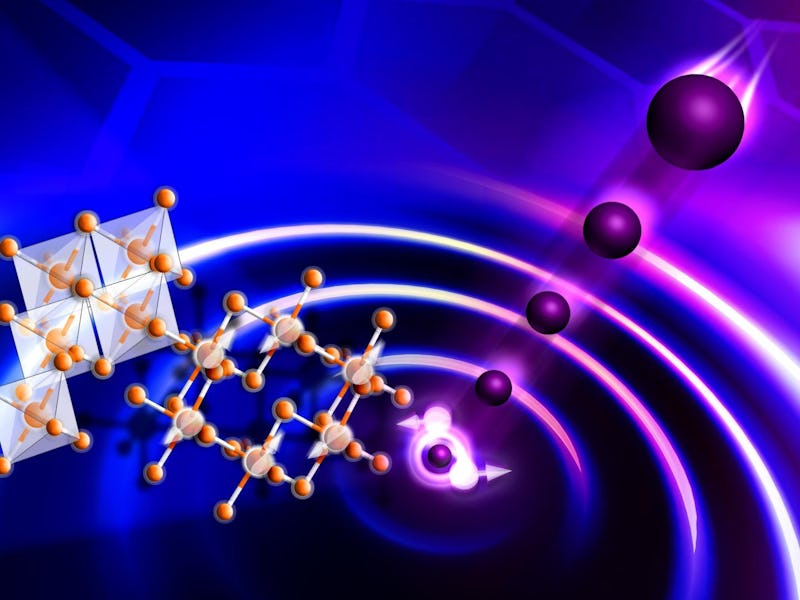Scientists Discover a New State of Matter: Quantum Spin Liquid
The long-theorized “quantum spin liquid” has finally been detected.

Physicists at Oak Ridge National Laboratory in Tennessee and the University of Cambridge have together discovered a new state of matter. The groundbreaking findings, reported in the journal Nature, detail the observations of the long-theorized but ever-elusive state known as “quantum spin liquid” – in which electrons seemingly break into smaller pieces.
“This is a new quantum state of matter, which has been predicted but hasn’t been seen before,” said Johannes Knolle, a scientist at Cambridge’s Cavendish Laboratory and one of the paper’s coauthors, in a news release.
Anyone with a basic knowledge of physics knows there are three major states of matter: solids, liquids, and gases. People with a little more knowledge might know of the other two classical states: plasmas (free charged particles that make up high energy events), and colloids (the “in betweens” make up two states at once, like butter).
Yet there are more than a dozen other states that exist, ones that are only observable at very small scales or under very phenomenal events. One of these is quantum spin liquid: a chaotic state that requires a bit more explanation before you can really get your head around what’s happening.
According to quantum mechanics, every particle can exhibit two kinds of angular momentum. The first is orbital angular momentum, and the second is spin. A crude analogy for these two respective actions is a planet revolving around the sun, exhibiting both an orbit and an axial spin.
When a system has achieved a series of interacting quantum spins, it’s thought to be in a disordered state the same way liquid water is disordered when compared to solid ice. Quantum spin liquid has similar behavior, but at low temperatures. Instead of coming together in a uniform pattern, such as to bring a substances together in a solid state, a chunk of matter that’s in quantum liquid spin will continue to act erratically like a hot mess of soup. In fact, the activity is so extreme that the particles actually fall apart. It’s a scene that contradicts exactly what you would expect in cold environments.
In this case, the research team observed fractional particles known as Majorana fermions in a two-dimensional material that is kind of similar to graphene. What they observed was similar to a hypothetical quantum spin liquid model known as the Kitaev model. The results finally spell the end of a 40-year search for this state of matter.
More specifically, the new quantum spin liquid observations shed light on a property known as electron splitting, which could one day help in constructing new kinds of quantum computers that operate way faster than today’s machines by bypassing the limits of conventional materials.
That kind of breakthrough is decades into the future. Yet the mere fact that we’ve been able to observe a new state of matter in the flesh is just another sign that humans have yet to scratch the surface in understanding just how the natural world works.